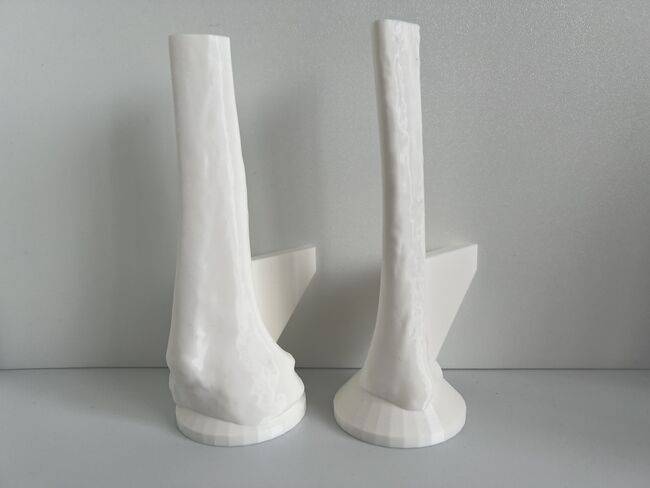
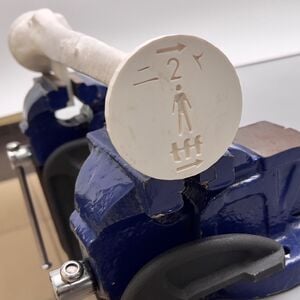
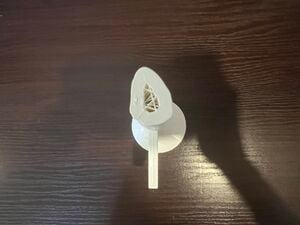
These 3D printed models accurately simulate bone length and diameter, external contour, cross-sectional shape, bicortical anatomy, cortical hardness, cancellous bone porosity, and microstructure, and far cortex thickness for adult, non-obese males at left tibial shaft fracture pin drilling sites for uniplanar external fixation.[1][2][3][4][5][6][7][8][9][10] Each model has a vise attachment to allow the user to secure the model inside a standard vise clamp to maximize safety during simulation training. These open-source, locally reproducible, and high fidelity 3D printed bone models teach essential irrigation and debridement, powered and manual drilling, and uniplanar external fixation skills that are transferable to the performance of other limb-saving and life-saving surgeries that require hardware stabilization and fixation.[11]
Find Local 3D Print On Demand Services[edit | edit source]
On-site access to a 3D printer is not required to reproduce these bone models. The open-source 3D files can be downloaded by any 3D printing organization anywhere.
Please click here to find and contact 3D print on demand services in your region.
3D Printing Software, Hardware, and Filament Specifications[edit | edit source]
All 6 requirements below must be met in order to 3D print bone models for orthopedic surgical simulation training.
- Slicing Program: Ultimaker Cura or Cura Lulzbot Edition only
- 3D Printer Type: Fused Filament Fabrication
- Nozzle Size: 0.4 mm
- Minimum Build Volume Z Height: 180 mm
- Print Speed on 3D Printer Control Screen: 100% or less
- Filament: Unexpired White PLA just fresh out of the sealed packaging
Ultimaker Cura, the world’s most popular 3D printing software with millions of users, already has profiles for many commercially available 3D printers, allows you to create a custom profile for other 3D printers, and is open-source and free to download.[12]
We have identified suitable white PLA filament brands for our open-source, high fidelity bone simulators which include but are not limited to:
- Filaments.ca Standard Milk White PLA 1.75 mm or Bone White PLA 1.75 mm Filament (Shore Hardness 84D) which can be shipped to any country;
- Filaments.ca 2.85 mm White PLA Filament (requires minimum order of 48 spools) (Shore Hardness 84D) which can be shipped to any country;
- Prusament Vanilla White PLA or Prusament Pristine White PLA 1.75 mm Filament (Shore Hardness 81D) which is available in 167 countries and territories; *Please do not purchase the Prusament PLA Blend Pearl White 970g because the Shore Hardness D value is only 72D +/- 1.5D*
- Prusament recycled PLA (rPLA) Rissoto 1.75 mm Filament (Shore Hardness 86D) which is available in 167 countries and territories;
- Ultimaker White PLA 2.85 mm Filament (Shore Hardness 84D) which is available in at least 114 countries and territories through Ultimaker re-sellers (including all 69 countries in the Sub-Saharan, Middle East and North African regions through AIGE Limited);
- Raise3D Premium White PLA Filament (Shore Hardness 79D ± 0.55D)[13] which is available in the United States from the manufacturer and in Africa through AIGE Limited; or
- Matterhackers PRO Series White PLA 1.75 mm and 2.85 mm Filament (Shore Hardness 80D-88D) which is available in North America.
Any white PLA filament brand with a Technical Datasheet with Shore Hardness D values between 79D-93D is suitable for 3D printing the bone models for orthopedic surgical simulation training.
Download Ready-To-Print GCODE Files[edit | edit source]
If you have a Creality Ender 3, Prusa i3MK3S, Ultimaker S3, Ultimaker S5, or Ultimaker 2+ Extended 3D printer, please download the pre-tested, ready-to-print g-code files below.
Creality Ender 3 3D Printer[edit | edit source]
| Model # | Print Time | White PLA Filament Weight | Download G-CODE File | Revision Date |
|---|---|---|---|---|
| 1 | 24 hours, 40 minutes | 214 grams | Click here to download g-code or right-click this link and select "Save link as:" File name: Model 1 - Male - Creality Ender 3 - 23-Oct-2022 version and Save as type: .GCODE File | October 23, 2022 |
| 2 | 19 hours, 39 minutes | 166 grams | Click here to download g-code or right-click this link and select "Save link as:" File name: Model 2 - Male - Creality Ender 3 - 23-Oct-2022 version and Save as type: .GCODE File | October 23, 2022 |
Prusa i3MK3S 3D Printer[edit | edit source]
| Model # | Print Time | White PLA Filament Weight | Download G-CODE File | Revision Date |
|---|---|---|---|---|
| 1 + 2 | 24 hours, 30 minutes | 404.25 grams | Right-click this link and select "Save link as:" File name: Model 1 + 2 - Male - Prusa i3MK3S - 22-Feb-2023 version and Save as type: .GCODE File | February 22, 2023 |
| 1 | 17 hours, 11 minutes | 214 grams | Click here to download g-code or right-click this link and select "Save link as:" File name: Model 1 - Male - Prusa i3MK3S - 23-Oct-2022 version and Save as type: .GCODE File | October 23, 2022 |
| 2 | 14 hours, 2 minutes | 166 grams | Click here to download g-code or right-click this link and select "Save link as:" File name: Model 2 - Male - Prusa i3MK3S - 23-Oct-2022 version and Save as type: .GCODE File | October 23, 2022 |
Ultimaker S3 3D Printer[edit | edit source]
| Model # | Print Time | White PLA Filament Weight | Download File | Revision Date |
|---|---|---|---|---|
| 1 | 8 hours, 17 minutes | 191 grams | Click here to download g-code or right-click this link and select "Save link as:" File name: Model 1 - Male - Ultimaker S3 - 23-Oct-2022 version and Save as type: .GCODE File | October 23, 2022 |
| 2 | 6 hours, 34 minutes | 148 grams | Click here to download g-code or right-click this link and select "Save link as:" File name: Model 2 - Male - Ultimaker S3 - 23-Oct-2022 version and Save as type: .GCODE File | October 23, 2022 |
Ultimaker S5 3D Printer[edit | edit source]
| Model # | Print Time | White PLA Filament Weight | Download File | Revision Date |
|---|---|---|---|---|
| 1 | 9 hours, 23 minutes | 217 grams | Click here to download g-code or right-click this link and select "Save link as:" File name: Model 1 - Male - Ultimaker S5 - 23-Oct-2022 version and Save as type: .GCODE File | October 23, 2022 |
| 2 | 7 hours, 28 minutes | 168 grams | Click here to download g-code or right-click this link and select "Save link as:" File name: Model 2 - Male - Ultimaker S5 - 23-Oct-2022 version and Save as type: .GCODE File | October 23, 2022 |
Ultimaker 2 Extended 3D Printer[edit | edit source]
| Model # | Print Time | White PLA Filament Weight | Download File | Revision Date |
|---|---|---|---|---|
| 1 | 13 hours, 8 minutes | 213 grams | Click here to download g-code or right-click this link and select "Save link as" Filename: Model 1 - Male - Ultimaker 2 Extended - 22-Oct-2022 version and File Type: .GCODE File | October 22, 2022 |
| 2 | 10 hours, 24 minutes | 165 grams | Click here to download g-code or right-click this link and select "Save link as:" Filename: Model 2 - Male - Ultimaker 2 Extended - 22-Oct-2022 version and File Type: .GCODE File | October 22, 2022 |
Fusion 3 F400-S 3D Printer[edit | edit source]
| Model # | Print Time | White PLA Filament Weight | Download File | Comments | Revision Date |
|---|---|---|---|---|---|
| 1 + 2 | 14 hours, 46 minutes | 424.67 grams | Right-click this link and select "Save link as" Filename: Model 1 + 2 - Male - Fusion 3 F-400S - 21-Feb-2023 version and File Type: .GCODE File | Simplify3D was used to slice this model. Be sure to use a thin, smooth, and even layer of glue on the print bed for adequate adhesion. | February 21, 2023 |
You cannot print .GCODE files that are not prepared for your 3D printer.
Download 3D Model STL Files For Slicing[edit | edit source]
Download the two 3D files (.STL) in the table below to input the required print settings to create the print files (.GCODE) for other 3D printers.
| Model # | Download STL File | Revision Date |
|---|---|---|
| 1 | Click on this link and click on "Model_1_-_Male_-25-June-2022_version.stl" to download the file | June 25, 2022 |
| 2 | Click on this link and click on "Model_2_-_Male_-08-June-2023_version.stl" to download the file | June 8, 2023 |
Input Required Print Settings[edit | edit source]
Please pay attention to and input all the required settings below to ensure the bone models are printed properly and display the required visual, tactile, and acoustic fidelity for orthopedic surgical simulation training.
- Slicing Program: please only use Ultimaker Cura or Cura Lulzbot Edition
- Filament Material: PLA at all original default settings (click here for image)
- Printing Temperature: please use the extruder and print bed temperature settings recommended for your specific 3D printer and specific PLA filament brand
- Support: None (click here for image)
- Layer Height: 0.3 mm or less (click here for image)
- Wall Thickness: 6.2 mm (this changes the wall line count) (click here for image)
- Top Layers: 0 (click here for image)
- Bottom Layers: default value (not 0) (click here for image)
- Infill Density: 15% (click here for image)
- Infill Pattern: Tri-Hexagon (click here for image)
- Top/Bottom Speed: 15.0 mm/s (click here for image)
- Build Plate Adhesion Type: No Raft (click here for image)
- Print Speed on 3D Printer Control Screen: 100% or less (click here for image)
If you are not familiar with using Ultimaker Cura or Cura Lulzbot Edition slicing programs, please click here to follow step-by-step instructions to prepare the models for printing.
Inspect Printed Models[edit | edit source]
- Please review the quality assurance checklist below to verify that each model was properly printed.
- If you are a 3D print on demand service provider, please send photos of the base, top, sides and vise attachment of sample printed models to the consignee.
Any model that does not meet the standard for all the quality assurance checklist items must be reprinted in accordance with the instructions outlined below.
| # | Action | Meets Standard | Does Not Meet Standard | Does Not Meet Standard | Check most appropriate response | Check most appropriate response |
|---|---|---|---|---|---|---|
| 1 | Inspect the base. | 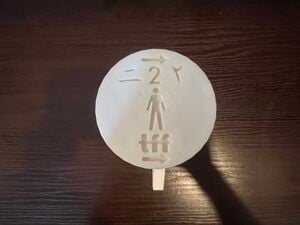 |
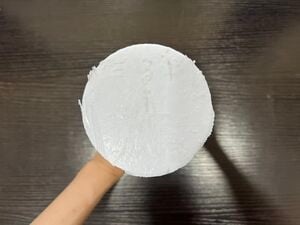 |
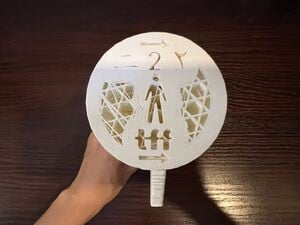 |
Model #1 Meets Standard Model #1 Does Not Meet Standard |
Model #2 Meets Standard Model #2 Does Not Meet Standard |
| 2 | Inspect the top. |  |
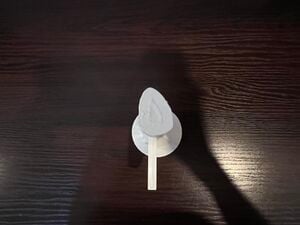 |
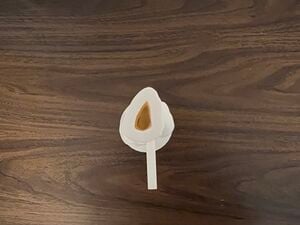 |
Model #1 Meets Standard Model #1 Does Not Meet Standard |
Model #2 Meets Standard Model #2 Does Not Meet Standard |
| 3 | Inspect both sides. | 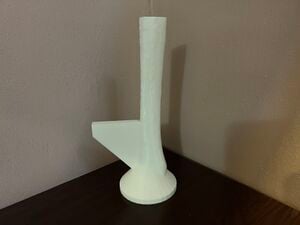 |
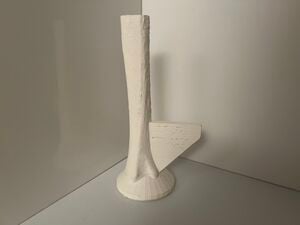 |
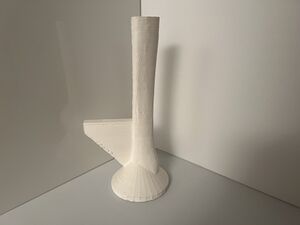 |
Model #1 Meets Standard Model #1 Does Not Meet Standard |
Model #2 Meets Standard Model #2 Does Not Meet Standard |
| 4 | Inspect the vise attachment. | 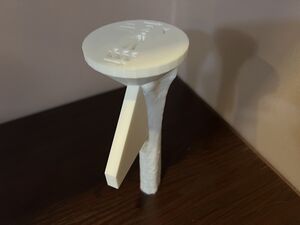 |
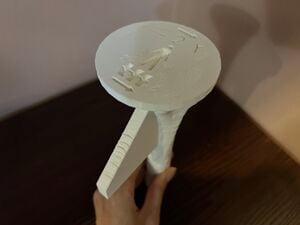 |
 |
Model #1 Meets Standard Model #1 Does Not Meet Standard |
Model #2 Meets Standard Model #2 Does Not Meet Standard |
Calculate Pricing[edit | edit source]
Once you have verified the models meet quality assurance standards, please click here to calculate the price of the models and generate an invoice.
All the 3D printed models print support-free and are designed to be made on any single or multi-extruder, fused filament fabrication 3D printer that can use g-code files sliced on Ultimaker Cura or Cura Lulzbot Edition and has a build volume Z height of 180 mm or more.
The table below summarizes our 2022-2023 market research across different countries on the pricing for Adult Male Tibial Bone Models #1 and #2 (not including local taxes or shipping costs).
| # | Country | 3D Printing Organization | Model Scale | Estimated Cost of Models #1 + #2 |
|---|---|---|---|---|
| 1 | Cameroon | Yansokilab[14] | 100% | $28.45 USD (19,500 CFA) |
| 2 | Cameroon | Ongola Fablab[15][16] | 100% | $33.27 USD |
| 3 | Canada | Qrint Studio | 100% | $50 USD |
| 4 | The Gambia | Make3D | 100% | $55.50 USD |
| 5 | India | KAD Enterprises[17] | 100% | $18.77 USD (₹1531) |
| 6 | India | You Imagine We Make[18] | 100% | $14.34 USD (₹1170) |
| 7 | Nigeria | AIGE Limited[19] | 95% | $22.15 USD[20] |
| 8 | Nigeria | Developer Fab Lab | 100% | $17 USD ($22 CAD) |
We did not include 2022 pricing from ITESL Fab Lab in Abuja, Nigeria because their Makerbot 3D printer is not capable of 3D printing our bone models. Makerbot 3D printers cannot use g-code files sliced by Ultimaker Cura or Cura Lulzbot and the proprietary Makerbot software does not permit inputting of the custom settings required to manufacture high fidelity bone simulation models for orthopedic surgical training.
Inspect Models Before Delivery[edit | edit source]
- Click on this link to print the quality assurance checklist for each shipment of 3D printed models by clicking on the "Download PDF" button in the upper righthand corner of this screen and selecting "Layout: Landscape" option for printing.
- Review the quality assurance checklist to verify that each model was properly printed prior to delivery and click on the checkboxes to check the most appropriate response.
- Write the model production period, total number of Adult Male Tibial Bone Models #1 and #2 accepted, date of inspection, print and sign your name, and fill in the name, address, and phone number of the consignee at the bottom of the checklist.
- Attach the completed and signed checklist to the delivery invoice for the consignee.
- File and save a back-up copy of the completed and signed checklist for your production and inspection and distribution records.
Any model that does not meet the standard for all the quality assurance checklist items must be rejected and will not be delivered to the consignee.
Troubleshooting Guide[edit | edit source]
If you're having problems in properly printing these models, please click on this link and carefully follow the detailed step-by-step instructions.
Cost Savings and Production Efficiency[edit | edit source]
The benefits of 3D printing the Tibial Shaft Transverse Fracture Simulator locally in Nigeria are that: (i) the production and delivery costs are 5 - 7 times cheaper and the production time is 34 times faster than purchasing an equivalent Sawbones 4th Generation Composite Bone Model which takes 21 days to produce and must be imported into LMICs; and (ii) the production cost is over 7 times cheaper than acquiring a human cadaveric tibia prepared by a local university anatomy lab.
These data-driven, gender-specific, easy to print, labor-saving, eco-friendly, hygienic, and cruelty-free bone simulation models are not made with natural rubber latex, are designed with safety features to protect users, and can be locally reproduced to offer the highest fidelity, standardized orthopedic surgical simulation training at the lowest cost to medical officers and surgeons who are not orthopedic specialists.
The costs of the 3D Printed Adult Tibial Bone Models will vary depending on the region's 3D printing organizations, and locally available brands of filament. In Nigeria, one 750 gram roll of Ultimaker White PLA filament (Shore Hardness 83D) costs €33 Euros which is equal to about 5¢ USD per gram.[4][21]
In 2022, the 3D Printed Adult Male Tibial Bone Models #1 and #2 produced by a local 3D printing business in Nigeria at 95% scale is $11.25 and $10.90 USD (not including local taxes or shipping costs).[20][22] The estimated filament weight and printing times for the 3D Printed Adult Male Tibial Bone Models #1 and #2 at 95% scale are 191 grams and 148 grams and 8 hours and 17 minutes, and 6 hours and 34 minutes, respectively.[22]
The Tibial Shaft Transverse Fracture Simulator is easy and quick to assemble and does not require any tools, specialized equipment, technical expertise, or time-consuming preparation to build, install, operate and maintain this simulator within the intended place of use. By purchasing locally made 3D printed bone models for uniplanar external fixation skills training, the learner also supports the local economy while saving on customs dues, processing fees, and international shipping costs that would be incurred when using artificial bone products that are not made locally and avoids prolonged and uncertain customs clearance times that occur when using artificial bone products that must be imported.
| Tibial Shaft Transverse Fracture Simulator
(3D Printed Adult Tibial Bone Models #1 and #2) |
Synbone Fractured Right Tibia: Diaphyseal Transverse Fracture (1118)[23] | Human Cadaveric Tibia
(Prepared by an University Anatomy Lab in Nigeria)[24] |
Tibia, 4th Gen., Composite, 17 PCF Solid Foam Core, Large (SKU:3402)[25] | |
|---|---|---|---|---|
| Bone Simulator Dimensions | Tibia with an overall length of 41 cm. | Tibial with an overall length of 38.2 cm.[23] | Varies.[1] | Tibia with an overall length of 40.5 cm.[25] |
| Bone Simulator Features | 3D printed anatomic bone models reproduce bicortical anatomy, cortical thickness, and cancellous bone to provide acoustic fidelity when drilling through the bone simulator. | "SYNBONE’s anatomical models are manufactured with a specially formulated polyurethane foam comprising of a cancellous inner core and a harder outer shell simulating the cortical bone."[26] |
|
Tibia contains "short fiber filled epoxy as the simulated cortical bone material," "a 17 PCF density cancellous foam core, and a 10 mm canal." |
| Tactile Fidelity | Made of biorenewable plastic with a hardness level that is very similar to human cortical bone to allow learners to develop the skills to prevent plunging through the far cortex. | "They are primarily developed for orthopaedic surgical education and are designed to provide the feeling of working with humanlike bone. Similar forces are required to saw, tap, plate and drill our models. Although the SYNBONE’s do not have the same biomechanical properties of natural bone, which is stronger than the SYNBONES due to its complex composition, the feedback is very positive from a number of biomechanical testing facilities that have compared our bone models with real bones."[26] | Human cadaveric tibial bone | Sawbones Composite Bones are the only Sawbones products that "mimic the [biomechanical] properties of human bones," and "are used as alternative testing media to human cadaver bone."[25][27] |
| Visual Fidelity | Yes. White colour | No. Tan Colour. | Yes. White colour | No. Gray/green colour[25] |
| Fracture Simulation | Simulates a transverse mid-shaft fracture of the tibia for uniplanar external fixation training. | Simulates a transverse mid-shaft fracture of the tibia for screwing and plating.[23] | Requires additional preparation to simulate a fracture. | Requires additional preparation by user to simulate a fracture. |
| Fracture Encapsulation | Encapsulates transverse fracture with cellophane. | No. | No. This would incur additional preparation and storage fees. | Does not encapsulate or re-attach fracture. |
| Vise Attachment | Contains a vise attachment to safely secure the model inside a standard vise clamp or to the side of a table or wood board. | Does not contain a vise attachment which mandates the use of a pair of two different specialized clamps (1 vise grip clamp:SKU:1605-1 and 1 bone clamp: SKU:1605) that cost $730.50 USD per pair of two different specialized clamps to properly secure the model to a table for safe simulation training for learners. | Does not contain a vise attachment which mandates the use of a pair of two different specialized clamps (1 vise grip clamp:SKU:1605-1 and 1 bone clamp: SKU:1605) that cost $730.50 USD per pair of two different specialized clamps to properly secure the model to a table for safe simulation training for learners. | Does not contain a vise attachment which mandates the use of a pair of two different specialized clamps (1 vise grip clamp:SKU:1605-1 and 1 bone clamp: SKU:1605) that cost $730.50 USD per pair of two different specialized clamps to properly secure the model to a table for safe simulation training for learners. |
| Self-Assessment | Has a flat base on the end of each fracture fragment which allows placement of the model on a flat, stable surface for standardized measurement and photographing of the drill trajectory angles of the Schanz Screws using a low-cost protractor for the self-assessment framework. | Lacks a flat base on the end of each fracture fragment which prevents placement of the model on a flat, stable surface for standardized measurement and photographing of the drill trajectory angles of the Schanz Screws using a low-cost protractor for the self-assessment framework. | Lacks a flat base on the end of each fracture fragment which prevents placement of the model on a flat, stable surface for standardized measurement and photographing of the drill trajectory angles of the Schanz Screws using a low-cost protractor for the self-assessment framework. | Lacks a flat base on the end of each fracture fragment which prevents placement of the model on a flat, stable surface for standardized measurement and photographing of the drill trajectory angles of the Schanz Screws using a low-cost protractor for the self-assessment framework. |
| Production Time | 14 hours 51 minutes (when Adult Male Tibial Bone Models #1 and #2 are printed consecutively).[22] | Ready to ship within 10 working days[23] | Depends on local availability of cadaver specimens which is difficult to predict. | Ready to ship in 21 days[25] |
| Delivery Time | Can be reliably delivered within 1-2 days anywhere across Nigeria by motorcycles, all-terrain vehicles, and airplanes.[28] | Uncertain and prolonged customs clearance times (which can take an average of 9 months in humanitarian zones). | Not typically available outside of cadaver labs. | Uncertain and prolonged customs clearance times (which can take an average of 9 months in humanitarian zones). |
| Purchase Cost (not including local taxes or shipping costs) | $20.15 USD[22] | $27.35 USD[23] | $150.00 USD[24] | $217.25 USD[25] |
| Delivery Cost (not including local taxes, customs dues, or processing fees) | $67.00 USD (5-May-2023 quote covers delivery of up to 1 kg from Port Harcourt to Abuja; each set of Adult Male Tibial Bone Models #1 and #2 at 100% scale weighs about 378 grams)[28][29] | $90.00 USD (freight costs to Abuja, Nigeria calculated on 3-May-2023)[30] | Not calculated because these are not typically available outside of cadaver labs. | $218.00 USD (shipping quote to Abuja, Nigeria provided by manufacturer on 17-Nov-2022) |
Noteː A product comparison was not made with the:
- Sawbones Tibia, Solid Foam, Large ($16.75 USD) because these models do not provide the tactile fidelity necessary to develop the skills to prevent plunging through the far cortex;
- Tibia with 12 mm Canal, Foam Cortical Shell, Left, Medium ($18.00 USD) because these models “are not designed to accurately reproduce the biomechanical behavior of human bone,” “cut and drill easier than the plastic cortical shell models,” and do not provide the tactile fidelity necessary to develop the skills to prevent plunging through the far cortex;
- Tibia with Fracture, Foam Cortical, Left, Medium ($32.25 USD) because these models “are not designed to accurately reproduce the biomechanical behavior of human bone,” “cut and drill easier than the plastic cortical shell models,” and do not provide the tactile fidelity necessary to develop the skills to prevent plunging through the far cortex;
- Sawbones Cylinder with Encapsulated Oblique Fracture ($41.25 USD) because the hollow short fiber reinforced epoxy cylinder does not have anatomic features that make it suitable for uniplanar external fixation training and does not appear to have adequate length to properly simulate an adult tibial midshaft fracture for uniplanar external fixation training which requires the placement of widely spaced pins in each fracture fragment;
- Sawbones Tibia, Plastic Cortical Shell, Left ($56.00 USD) because these models do not provide the tactile fidelity necessary to develop the skills to prevent plunging through the far cortex; and
- Nacional Ossos 9701 Left Tibia with Fibula - Fracture 2 ($24.00 USD) because the manufacturer has no internal data and/or external studies that demonstrate that these models have similar mechanical properties to human bone.[27][31][32][33][34][35][36]
It is not ethical or safe to have learners (who have no prior experience with drilling into bone) teach themselves orthopedic surgical skills on bone simulators that lack the tactile fidelity required to develop the skills to prevent plunging through the far cortex.
The benefits of 3D printing and delivering one Tibial Shaft Transverse Fracture Simulator locally in India are the cost is at least 13 - 14 times cheaper ($373.25/$28.75 USD and $373.25/$26.84 USD) and the production time is at least 58 - 83 times faster (120,960 minutes/2081 minutes and 120,960 minutes/1450 minutes) than purchasing ($217.25 USD) and shipping ($156 USD) an equivalent Sawbones 4th Generation Composite Bone Model that is manufactured abroad and takes 84 days or more to produce. Local taxes, customs dues, processing fees, and customs clearance times were not included in the cost comparison because these values are not known until the Sawbones 4th Generation Composite Bone Model order (which takes 84 days or more to produce) has shipped.
Acknowledgements[edit | edit source]
This work is funded by a grant from the Intuitive Foundation. Any research, findings, conclusions, or recommendations expressed in this work are those of the author(s), and not of the Intuitive Foundation.
References[edit | edit source]
- ↑ 1.0 1.1 Ugochukwu EG, Ugbem LP, Ijomone OM, Ebi OT. Estimation of Maximum Tibia Length from its Measured Anthropometric Parameters in a Nigerian Population. J Forensic Sci Med [serial online] 2016 [cited 2021 Jun 27];2:222-8. Available from: https://www.jfsmonline.com/text.asp?2016/2/4/222/197928.
- ↑ U.S. Department of Health and Human Services — National Institutes of Health. Human tibia and fibula. [Internet]. Bethesda, (MD): NIH 3D Print Exchange; 2014 May 29 [cited 2021 Aug 17]. Available from: https://3dprint.nih.gov/discover/3DPX-000169.
- ↑ Gosman JH, Hubbell ZR, Shaw CN, Ryan TM. Development of cortical bone geometry in the human femoral and tibial diaphysis. Anat Rec (Hoboken). 2013 May;296(5):774-87. doi: 10.1002/ar.22688. Epub 2013 Mar 27. PMID: 23533061.
- ↑ 4.0 4.1 Ultimaker. Ultimaker PLA Technical Data Sheet [Internet]. Ultimaker Support. [cited 2021 July 29]. Available from: https://support.ultimaker.com/hc/en-us/articles/360011962720-UltimakerPLA-TDS.
- ↑ Vian, Wei Dai and Denton, Nancy L., "Hardness Comparison of Polymer Specimens Produced with Different Processes" (2018). ASEE IL-IN Section Conference. 3. https://docs.lib.purdue.edu/aseeil-insectionconference/2018/tech/3.
- ↑ Society For Biomaterials 30th Annual Meeting Transactions, page 332. Femoral Cortical Wall Thickness And Hardness Evaluation. K. Calvert, L.A. Kirkpatrick, D.M. Blakemore, T.S. Johnson. Zimmer, Inc., Warsaw, IN.
- ↑ Meyers, M. A.; Chen, P.-Y. (2014). Biological Materials Science. Cambridge: Cambridge University Press. ISBN 978-1-107-01045-1.
- ↑ Forrest AM, Johnson AE, inventors; Pacific Research Laboratories, Inc., assignee. Artificial bones and methods of making same. United States patent 8,210,852 B2. Date issued 2012 Jul 3.
- ↑ National Institutes of Health Osteoporosis and Related Bone Diseases National Resource Center. What is Bone? [Internet]. Bethesda (MD): The National Institutes of Health (NIH); 2018. [Cited 2021 Aug 17]. Available from: https://www.bones.nih.gov/health-info/bone/bone-health/what-is-bone.
- ↑ Maeda K, Mochizuki T, Kobayashi K, Tanifuji O, Someya K, Hokari S, Katsumi R, Morise Y, Koga H, Sakamoto M, Koga Y, Kawashima H. Cortical thickness of the tibial diaphysis reveals age- and sex-related characteristics between non-obese healthy young and elderly subjects depending on the tibial regions. J Exp Orthop. 2020 Oct 6;7(1):78. doi: 10.1186/s40634-020-00297-9. PMID: 33025285; PMCID: PMC7538524.
- ↑ Debas, H. T., P. Donkor, A. Gawande, D. T. Jamison, M. E. Kruk, and C. N. Mock, editors. 2015. Essential Surgery. Disease Control Priorities, third edition, volume 1. Washington, DC: World Bank. doi:10.1596/978-1-4648 -0346-8. License: Creative Commons Attribution CC BY 3.0 IGO.
- ↑ https://ultimaker.com/software/ultimaker-cura
- ↑ Ojo, Adeshina. Nigerian Orthopedic Association Pre-Conference Training Workshop [Internet]. Message to: Julielynn Wong. 2023 Jul 8 [cited 2023 Jul 8]. [3 paragraphs].
- ↑ https://www.fablabs.io/labs/yansokilab
- ↑ https://www.fablabs.io/labs/ongolafablab
- ↑ https://www.auf.org/afrique-centrale-grands-lacs/
- ↑ https://www.printables.com/social/350914-anmol/about
- ↑ https://www.printables.com/social/41361-sharad/about
- ↑ https://new.aige.info/
- ↑ 20.0 20.1 AIGE Limited. Personal communication. May 23, 2022.
- ↑ Kuunda 3D Ltd. Personal communication. July 14, 2021.
- ↑ 22.0 22.1 22.2 22.3 AIGE Limited. Personal communication. November 1, 2022.
- ↑ 23.0 23.1 23.2 23.3 23.4 https://www.synbone.com/product/ifx-040007/?shop_currency=USD
- ↑ 24.0 24.1 Dr. Habila Umaru. Personal communication. May 13, 2021.
- ↑ 25.0 25.1 25.2 25.3 25.4 25.5 https://www.sawbones.com/tibia-large-left-4th-generation-composite-3402.html
- ↑ 26.0 26.1 https://www.synbone.com/products/bone-models/
- ↑ 27.0 27.1 Elfar J, Menorca RM, Reed JD, Stanbury S. Composite bone models in orthopaedic surgery research and education. J Am Acad Orthop Surg. 2014 Feb;22(2):111-20. doi: 10.5435/JAAOS-22-02-111. PMID: 24486757; PMCID: PMC4251767.
- ↑ 28.0 28.1 https://www.riders.org/where-we-work/nigeria/
- ↑ Obi, Desmond. Shipping Quote Request [Internet]. Message to: Julielynn Wong. 2022 Nov 21 [cited 2022 Dec 24]. [2 paragraphs].
- ↑ https://www.synbone.com/online-catalogue/checkout/
- ↑ Sawbones. Tibia with 12.5 mm Canal, Solid Foam, Left, Large [Internet]. Best Anatomical Medical Training Models Company. 2022 [cited 2022 Nov 9]. Available from: https://www.sawbones.com/tibia-large-left-solid-foam-w-canal1125.html.
- ↑ https://www.sawbones.com/tibia-medium-left-foam-cortical-shell-w-cancellous-1117.html
- ↑ https://www.sawbones.com/tibia-w-short-oblique-fx-1117-26.html
- ↑ Sawbones. Cylinder with encapsulated oblique fracture [Internet]. Best Anatomical Medical Training Models Company. Sawbones; 2021 [cited 2021 Nov 28]. Available from: https://www.sawbones.com/cylinder-short-oblique-fracture-w-single-neoprene-cover-1521-617-4.html.
- ↑ https://www.sawbones.com/tibia-large-left-solid-white-plastic-no-canal-1104-9.html
- ↑ https://ossos.com.br/categoria/ortopedia/modelos-com-fratura/tibia/9701-tibia-esquerda-com-fibula-fratura-2-procedimento-mais-indicados-cortes-cirurgicos-traumas-ortopedicos-colocacao-parafusos-placas-fixador-externo-demonstracao-feiras-congressos-nacional-osso.html
